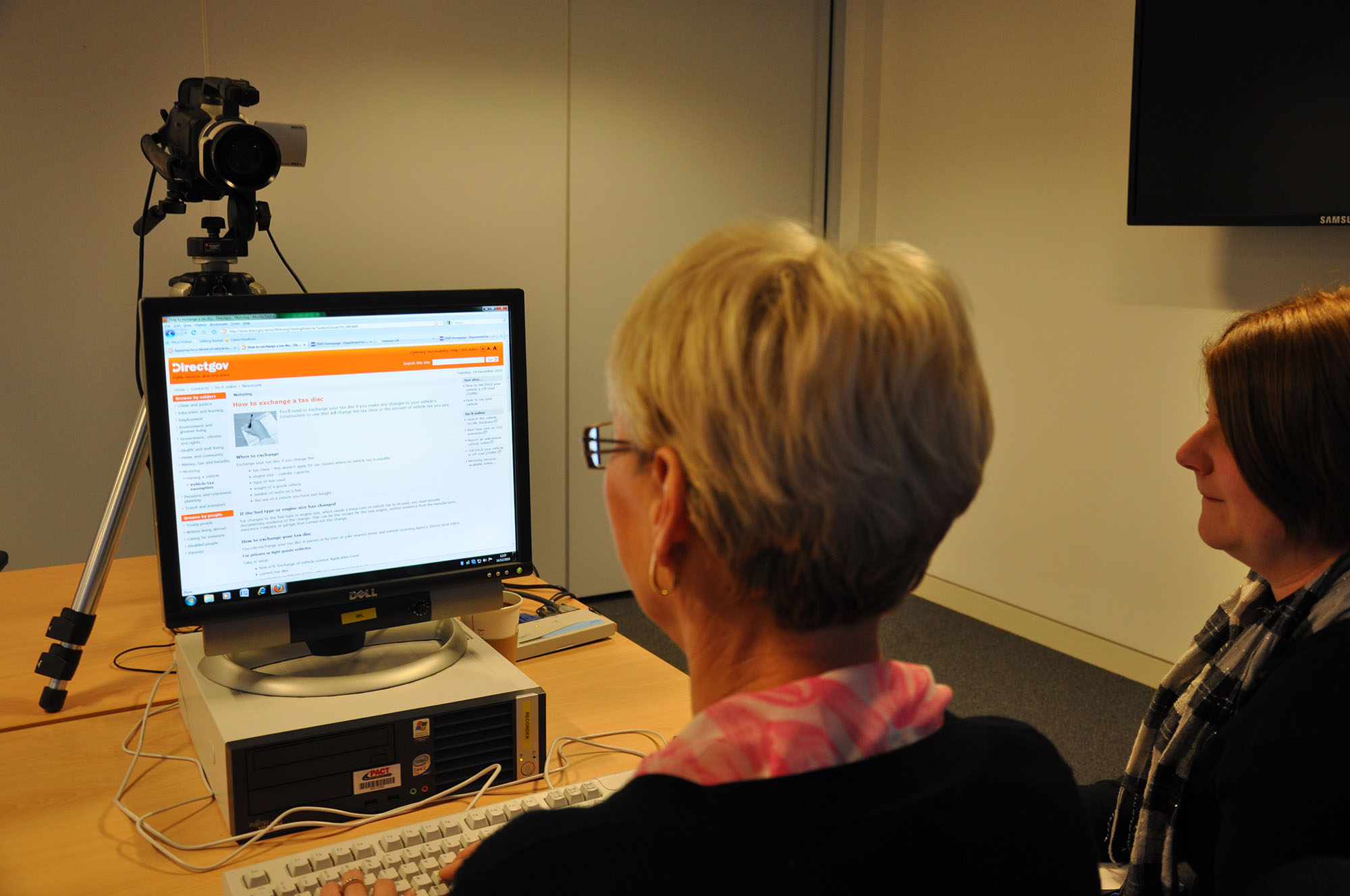We’re learning a lot about users as we work with more teams outside GDS. Jamie Trollope from the Customer Insight and Diversity Team at the Driver and Vehicle Licensing Agency (DVLA) writes about what they’ve discovered during some recent user testing.
Customer insight plays a vital part in ensuring any DVLA product, service or initiative is fit for purpose and easy to use for all our customers. Recently we tested new versions of driving licence renewal reminder forms and new online transactions with profoundly deaf customers. We wanted to share some of our findings.
Insight and diversity
Our Customer Insight and Diversity Team is an in-house group of researchers and usability testers who use a range of techniques to engage with our customers.
We test a variety of things from paper forms, mock web pages or online transactions, to telephone Interactive Voice Recognition (IVR) systems. We also make sure we get a diverse selection of people in for these tests. This ensures we get feedback from disabled or traditionally difficult to reach customers.
There are more than 3.7 million people of working age (16 to 65) in the UK with some form of hearing loss, which demonstrates the potential impact of not catering for this customer segment.
For the testing with deaf users, we worked closely with various associations and charities to help us find participants. In this case we had excellent support from Robin Ash, Midlands region Empowerment and Campaigns officer for the British Deaf Association.
What did we find out?
User testing is always an important opportunity to challenge (or validate) assumptions we make while designing services. Initial discussions around the reminder letters quickly made us realise how difficult certain groups of customers find it to access DVLA services (and many others across the public sector).
For example, it didn’t occur to me that the average reading age in the deaf community is generally lower than the UK adult population. This was first identified by Reuben Conrad in 1980 when he tested deaf children’s reading skills and found that the average reading age was 8 years old. It was so shocking that many people started to change from oral education to signing. The average has now crept up to about 9 but it is still less than what's required to be able to read the Daily Mail.
Statistics cited by the Department for Education show deaf children's attainment at Key Stage 2 English and Maths was 42% lower than their hearing counterparts. There are too many reasons for such low figures to include them all in this short post. However, it is useful for us to know what we are dealing with; and important that we're aware that deaf people have varied levels of written and sign language competency.
This meant that some of the wording and terminology we used in our literature was completely unknown to the participants. For example, words like ‘surrender’ and ‘defaced’ were known only in a very specific context, and caused quite a bit of confusion. Customers also mentioned they found using our online services generally hard for those same reasons.
On the whole, the new transaction pages we tested were very well received. They were described as simple and easy to follow, allowing the individual to retain their independence and complete the transaction rather than potentially struggle with communication through an intermediary (for example, face-to-face at a DVLA office or with the help of a social worker).
The younger participants were particularly receptive, and although there were a couple of issues raised there wasn’t anything that would result in a failed transaction or cause them to seek someone to help. These results are being fed back to the relevant teams and recommendations have been made to improve the language and accessibility of our digital services.
I’m pleased to say that the test was a great success, and we now have some valuable insight about the changes we're proposing. It’s a great example of how the Customer Insight & Diversity team has been able to identify significant issues that we need to address, and how our recommendations have been fed back into the delivery of products and services.
Research and testing in this way is critical and should be a part of any business change or service development. Putting the customer at the heart of what we do is more important than ever, particularly in supporting digital by default services.




2 comments
Comment by Laurie Monk posted on
I hope the results of your findings are published in the forms of guidance and advice to enable Local Authorities to benefit from your research.
Comment by Mairi Macleod posted on
Excellent - I presume other government departments will take this into account on their own websites?